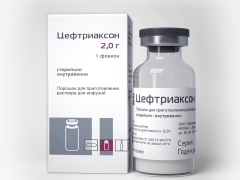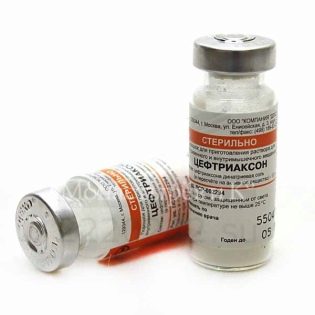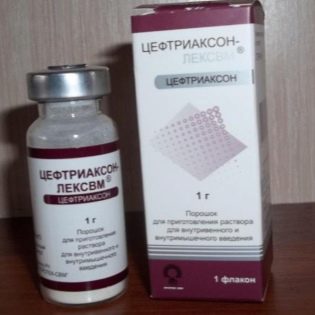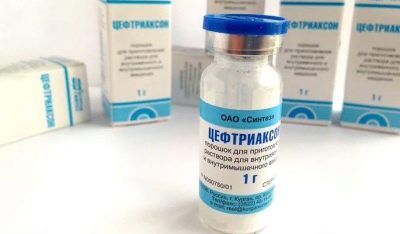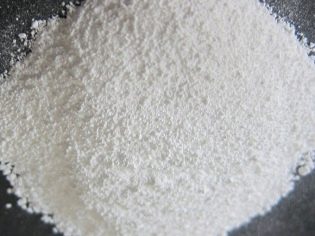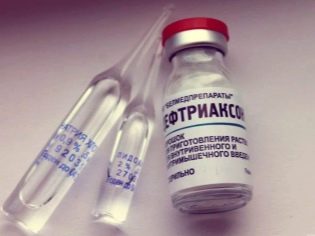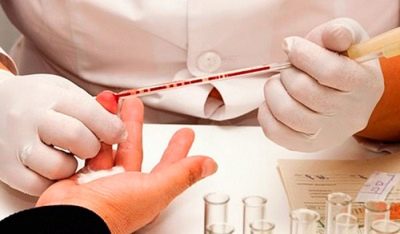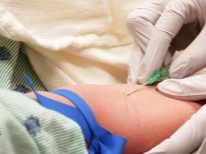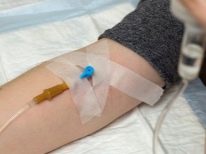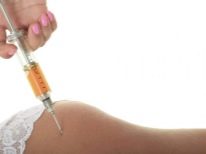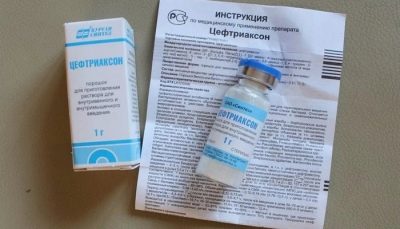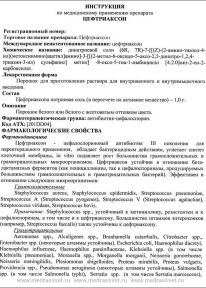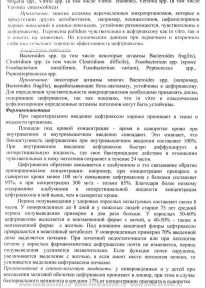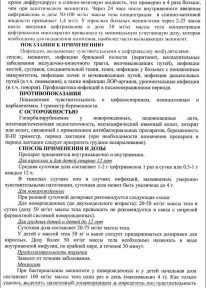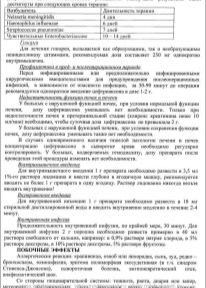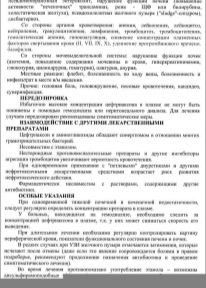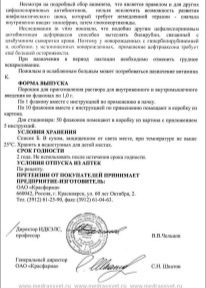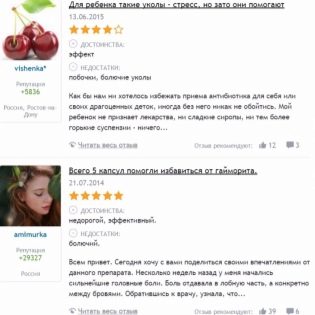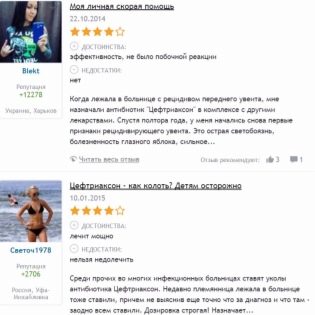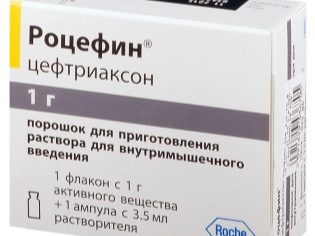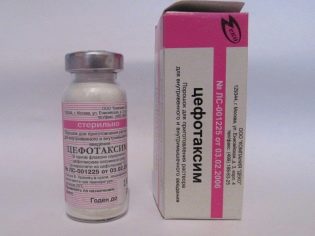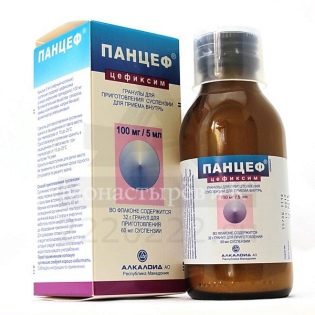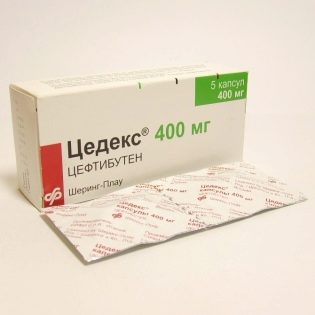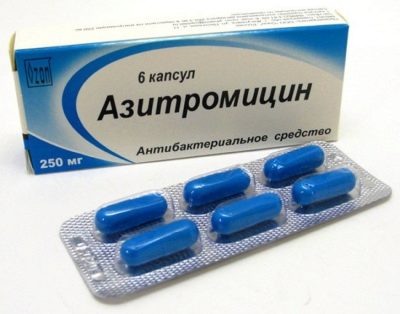Ceftriaxone for children: instructions for use
Ceftriaxone is one of the popular cephalosporin antibiotics, which belongs to the third generation of such drugs. Since it is rapidly destroyed when it enters the digestive tract, the only dosage form of such a drug is injectable. In syrup, tablets, capsules and other forms of the drug with this name there. Ceftriaxone injections are often prescribed for adults for sinus, otitis, peritonitis, pneumonia and other infectious diseases. The drug is in demand in childhood.
Release form
Ceftriaxone is produced by many Russian pharmaceutical companies (Krasfarma, Biosintez, Decaux, Lecco, Sintez, etc.) and abroad - in India, China, Kazakhstan, Belarus and other countries. In the name of the drug, sometimes there is a prefix in the form of an additional word or abbreviation. She points to the manufacturer, for example, Ceftriaxone Kabi is a product of the German company Fresenius Kabi, Ceftriaxon-LEKSVM is produced by the domestic manufacturer Protek-SVM, and Ceftriaxon-Jodas is manufactured in India by Jodas Expoim. However, all these drugs are comparable to the usual "Ceftriaxone", because they have the same active substance and the same form of release.
The drug is represented by a crystalline powder, which is usually white in color, but there may be a slight yellowness or a faint orange tint. It is sold in glass vials with a capacity of 10 or 20 ml, tightly closed with a rubber stopper and a metal cap (sometimes also a plastic stopper).
There can be only one bottle in one box, but packs containing 5-10 or more bottles are sold. Sometimes a solvent is applied to them, which is an ampoule with 5 ml of clear liquid.
Composition
The main and only component of the powder is the substance of the same name, which is contained in the drug in the form of sodium salt. Its dosage in one bottle can be:
- 250 mg;
- 500 mg;
- 1000 mg (1 g);
- 2000 mg (2 g).
In addition to this compound, there are no other substances inside the vial. If the package contains a solvent, it is presented with sterile water.
Operating principle
The drug has a broad spectrum bactericidal effect. It affects harmful microorganisms, disrupting the synthesis of their cell walls. Such exposure leads to the death of the pathogen and a decrease in the inflammatory response. The drug is able to destroy:
- Staphylococcus aureus;
- pyogenic streptococci;
- other types of streptococci;
- citrobats;
- enterobacteria;
- Klebsiella (including the causative agent of pneumonia);
- E. coli;
- morganella;
- pseudomonads;
- meningococci;
- protea;
- salmonella;
- gonococci;
- providence;
- shigella;
- cholera vibrios;
- clostridia;
- fusobacteria;
- peptokokki;
- Yersinia and some other pathogens.
However, many strains of enterococci, some staphylococci, enterobacteria, pseudomonads, bacteroids are resistant to the drug. Injections do not affect viruses, pathogenic fungi and protozoa, so they are not prescribed for mononucleosis, ARVI, fungal infections, and so on.
Indications
The reason to appoint a child "Ceftriaxone" is:
- otitis caused by pathogenic bacteria;
- angina;
- bacterial meningitis;
- sinusitis;
- bronchitis;
- pneumonia;
- cholangitis;
- peritonitis;
- infection of the subcutaneous tissue or skin;
- bone infection;
- pyelonephritis;
- urinary tract infection;
- suppuration of wounds on the skin or burns;
- lung abscess;
- endocarditis;
- Lyme disease;
- other infections caused by bacteria that are sensitive to the medication.
Injections can also be used to prevent postoperative infection, for example, if a child is going to have surgery on the heart or kidneys. Sometimes ENT doctors prescribe inhalations in a nebulizer, as well as complex drops, which include "Ceftriaxone".
This treatment is used for purulent rhinitis, adenoiditis or sinusitis, but most experts do not recommend dripping such an antibiotic into the nose, since there are special means for this purpose.
How old is allowed?
Treatment with Ceftriaxone is possible at any age, so this antibiotic is prescribed from birth, including babies who were born before the prescribed time.
Contraindications
“Ceftriaxone” is prohibited to use only in patients with hypersensitivity to its active compound, as well as in case of allergy to other cephalosporins. However, there are quite a few conditions that require caution when prescribing such injections:
- if the baby is born prematurely;
- if the patient has hypersensitivity to drugs from the group of carbapenems or penicillins;
- if the child has liver failure;
- if the medication is prescribed to a newborn with hyperbilirubinemia;
- if the work of the kidney of a small patient is impaired;
- if after treatment with antibiotics, the child has developed enteritis or colitis (including in the past).
Side effects
Ceftriaxone can provoke an allergic reaction, for example, causing a skin rash, erythema, edema, chills, pruritus, fever, or other allergy symptom. In this situation, the medication is immediately canceled and see a doctor.
The drug often causes a local reaction. When intramuscular injections are often pain and induration, when injected into a vein - pain or phlebitis. In addition, children with Ceftriaxone may complain of dizziness or headaches.
The digestive tract of children receiving Ceftriaxone may react to the medication with nausea, abdominal pain, inflammation of the tongue, meteorism, changes in taste and other disorders. Sometimes, as a result of treatment with this remedy, enterocolitis develops (it is called pseudomembranous), pancreatitis, or bile stasis. With such symptoms, use of the drug is stopped.
The drug can become the cause of candidosis or superinfection, when the body's resistance under the influence of injections decreases and it becomes more susceptible to various pathogens. Because of this, a thrush or other infection may occur after ingestion.
Occasionally, the use of Ceftriaxone affects the blood picture, causing leukopenia (due to neutropenia and lymphopenia), thrombocytopenia and a decrease in the number of red blood cells. In some children, a blood test, on the contrary, shows thrombocytosis and leukocytosis. The consequence of such a negative impact on the organs of blood formation are bleeding and anemia. In order to prevent their occurrence, when prescribing a medicine for a course longer than 10 days, control blood tests must be performed.
With prolonged therapy, the antibiotic can change other indicators, for example, prothrombin time (it can either increase or shorten), bilirubin level (increases), liver enzyme activity (increases), urea concentration (increases). Erythrocytes and glucose can be detected in the patient's urine.
Instructions for use
Ceftriaxone can be administered in three ways:
- Jet into the vein. For such injections, water for injection is added to the powder in a volume of 5 ml (if in a vial 250-500 mg) or 10 ml (if the vial contains 1 g). Administration should be slow, within two to four minutes.
- Drip into vein. Such injections are usually prescribed, if necessary, to introduce a large dose of "Ceftriaxone" (more than 50 mg / kg). The contents of the vial diluted with 40 ml of glucose solution, sodium chloride or other preparation for intravenous infusion, not containing calcium. A dropper set for at least 30 minutes.
- Intramuscularly. Since such injections are very painful, Lidocaine or Novocaine is used as a solvent, after making sure that there is no allergy to such anesthetic. For dilution of 0.25-0.5 g of powder, 2 ml of liquid are used, for 1 g - 3.5 ml of anesthetic solution. More than 1 g of antibiotic at a time in the muscle tissue is not injected. Prick the drug is recommended in a place where the muscles are more pronounced (shoulder, buttock, thigh) and change it for the next injection.
For injections, it is recommended to use freshly prepared solutions, but if necessary, the diluted antibiotic (if the cork is not opened, but only punctured by a needle) can be put in the refrigerator, but for a period not exceeding 12 hours, that is, until the next injection. At the same time, it is necessary to remove the medicament from the refrigerator in advance so that it warms slightly before the injection.
The dosage of "Ceftriaxone" must be calculated for each child separately, since it depends on the age and severity of the infection. If the injections are prescribed to a newborn in the first 14 days of life, then from 1 to 20 kg of its body weight per day requires from 20 to 50 mg of the drug. Infants older than two weeks and older children (up to the age of 12 or weighing less than 50 kg) will have a daily dosage of 20-80 mg per kilogram. With severe diseases (for example, with bacterial meningitis), the dose is increased to 100 mg / kg per day.
If the drug is prescribed to a child who weighs more than 50 kg, use doses for adults. Ceftriaxone is administered to such patients twice a day with an interval of 12 hours, in the range of 500-1000 mg, or once a day in a dose of 1-2 grams. The maximum daily dose for severe infections for teenagers is 4 grams of antibiotic.
The duration of the course is different in different patients, since it affects the severity and nature of the disease. For example, if a child has meningitis caused by meningococcus, Ceftriaxone is prescribed for 4 days. For diseases provoked by streptococci, injections are used for at least 10 days. In Lyme disease, treatment is continued for 14 days.
If Ceftriaxone is selected as a prophylactic medicine for a child who is to undergo surgical treatment, the injection is given once for 0.5-1.5 hours before the operation.
Overdose
If the dose of Ceftriaxone is too high, negative side effects, such as headache or vomiting, will appear or increase.
With the help of hemodialysis, it will not work to remove the drug when it is in excess blood concentration, therefore, overdose only symptomatic measures are used.
Interaction with other drugs
It is unacceptable to mix Ceftriaxone solution and any other antibiotics in one syringe. If the causative agent of infection is a Gram-negative bacterium, Ceftriaxone can be administered together with aminoglycosides (they will enhance the effect of each other), but they should be used separately.
Terms of sale
It is possible to buy one or several vials of “Ceftriaxone” only by prescription, therefore, you first need to consult a doctor who will assess the need for antibiotic therapy and determine the correct dosage. The price of the drug is affected by the dosage of the powder, the number of flacons in the pack and the manufacturer. On average, for one bottle of domestic production, depending on the dose, you need to pay 20-50 rubles.
Storage features
The shelf life of the powder in sealed bottles is 2 years (sometimes 3 years) from the date of manufacture, which must be specified on the package. While this period has not expired, the medicine should be kept out of the reach of children, where there are no direct rays of the sun, and the temperature does not exceed +25 degrees.
Reviews
On the treatment of children "Ceftriaxone" found a lot of positive feedback. In them, parents confirm that such an antibiotic worked well and helped to quickly cure otitis, bronchitis, pyelonephritis or another disease caused by harmful bacteria. The advantages of the drug include its wide range of antimicrobial effects, the ability to use at any age and a short list of contraindications, as well as affordable cost.
There are few negative reviews about the use of Ceftriaxone and most of them include complaints about side effects, such as an allergic rash or diarrhea. A disadvantage of the medication is that it is available only in injections - so that the drug does not harm, it should be properly diluted and pricked, which mothers usually do not cope with, so you have to resort to the help of health workers.
In addition, the injections are very painful, so they are diluted with anesthetic, which increases the risk of an allergic reaction.
There are also reviews in which the drug is called ineffective, due to the resistance of bacteria to its active substance. In such situations, we had to cancel Ceftriaxone and select another treatment for the child.
Analogs
If necessary, replace ceftriaxone with another cephalosporin antibiotic the doctor will recommend a medicine that also represents the third generation, for example:
- "Rocephin". This Swiss drug also contains ceftriaxone in the form of disodium salt. It is represented by vials of 250, 500 and 1000 mg. He, like Ceftriaxone, is discharged from birth with the same indications and in the same doses.
- «Cefotaxime». This antibiotic is also available in injectable form and can be used from birth, with the exception of intramuscular injections, which are prescribed from 2.5 years.
- «Suprax». This drug contains cefixime and is available in several forms. For children, the most convenient are the granules for the preparation of a sweet suspension with strawberry flavor. This variant of the antibiotic can be used from 6 months of age.
- "Lendatsin". This is another Ceftriaxone-containing counterpart that Lek produces from Slovenia. One bottle can contain 250 mg of active substance, 1 g or 2 g.
- "Claforan". The effect of this drug is provided by cefotaxime. It is available in injectable form and can be used for intravenous injections at any age, and intramuscularly from 2.5 years.
- «Pancef». This medicine works due to cefixime and is most in demand in childhood in the form of granules. After combining with water, an orange-flavored suspension is obtained from them, allowed for patients older than six months.
- «Cedex». This drug based on ceftibuten is produced in the form of a powder, from which a cherry-flavored suspension is made. It is permissible to give babies older than six months. In addition, there is "Cedex" in capsules. In this form, the drug is used from 10 years of age with a body weight of more than 45 kg.
If you are allergic to ceftriaxone, the child will have to take another group antibiotic. In such a situation, the doctor may prescribe "Sumamed», «Azithromycin», «Vilprafen Solutab», «MacropeneAnd other drugs. They all contain different active ingredients and differ in contraindications, age restrictions and other features.
For this reason, the choice of analogue in the event of an allergic reaction to cephalosporins should be entrusted to a doctor.
About the drug "Ceftriaxone", see the following video.
